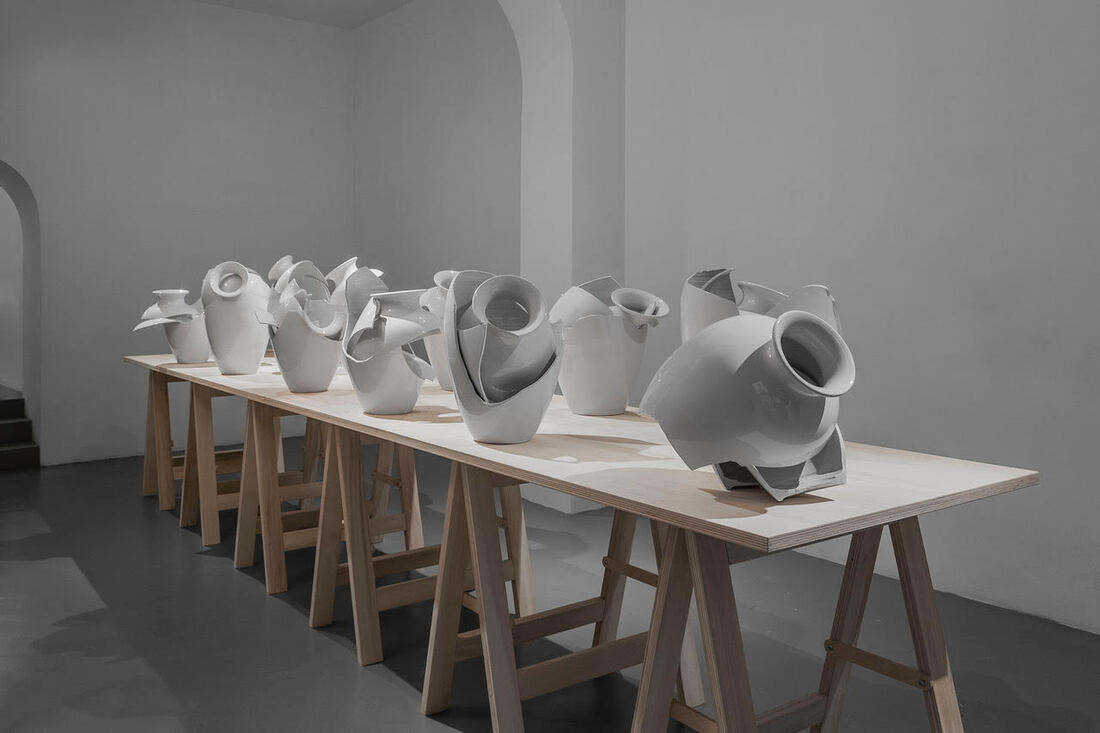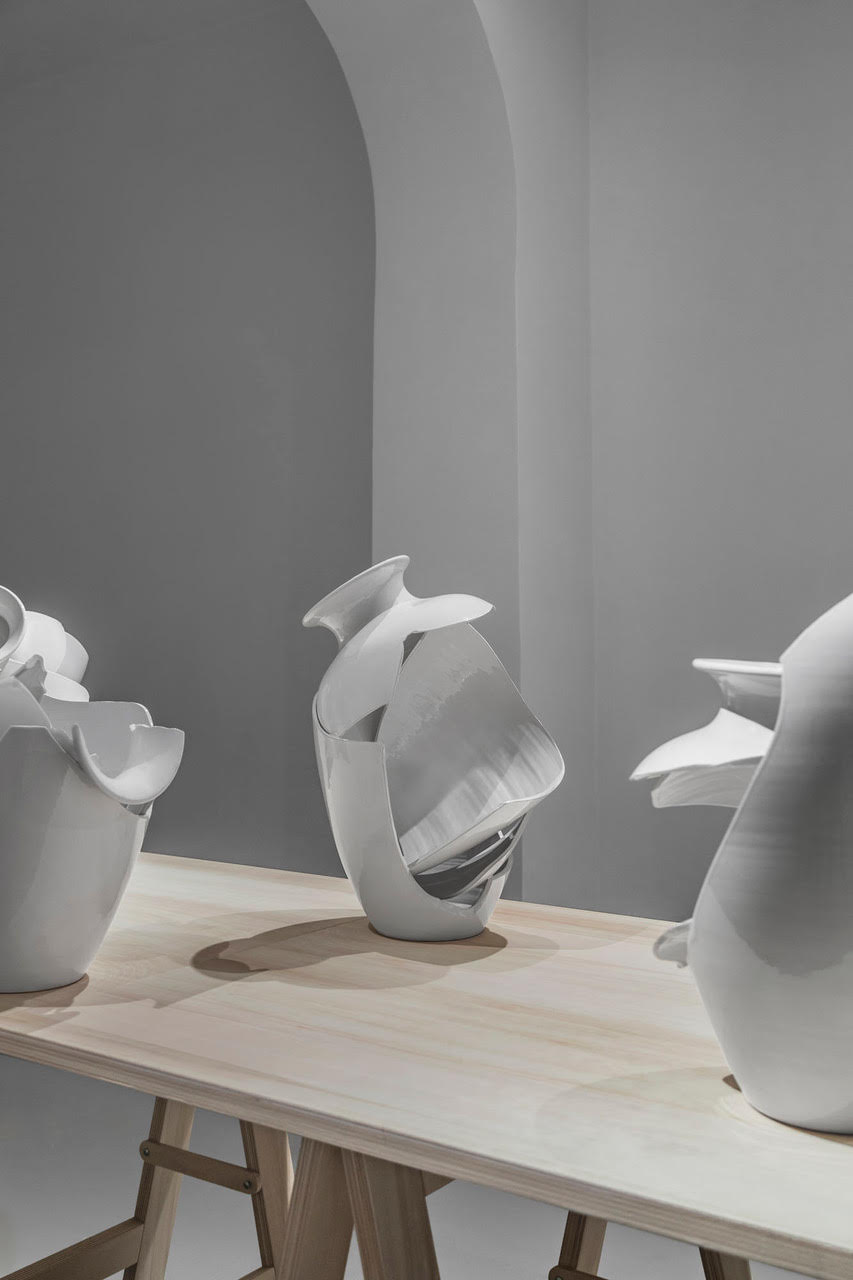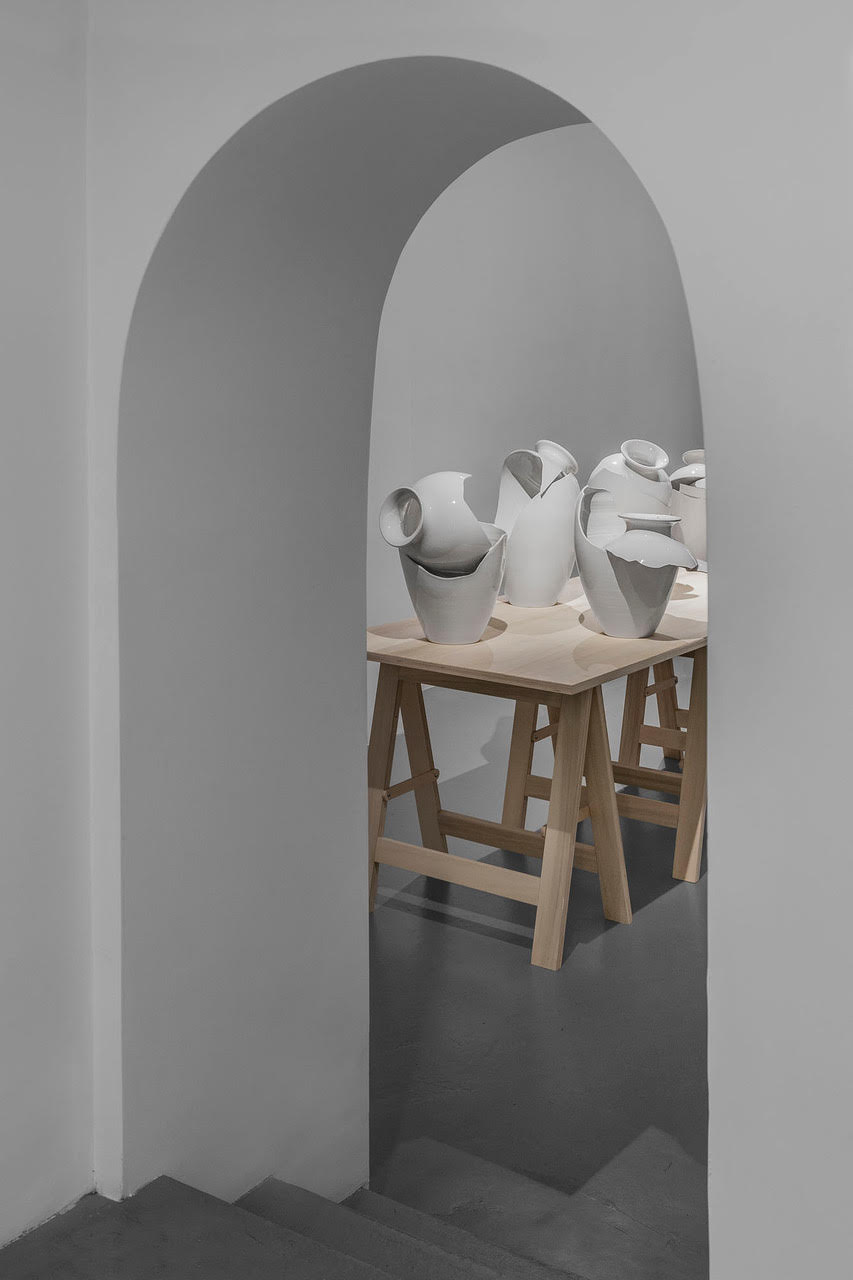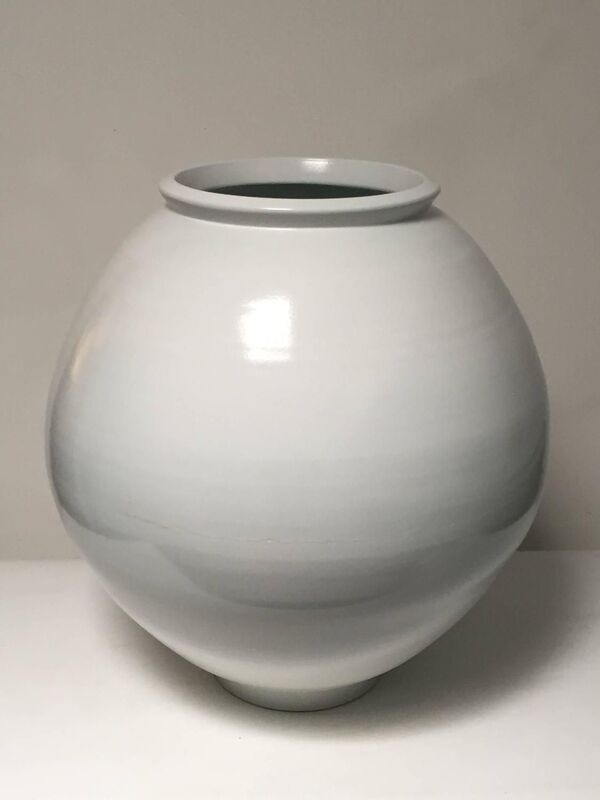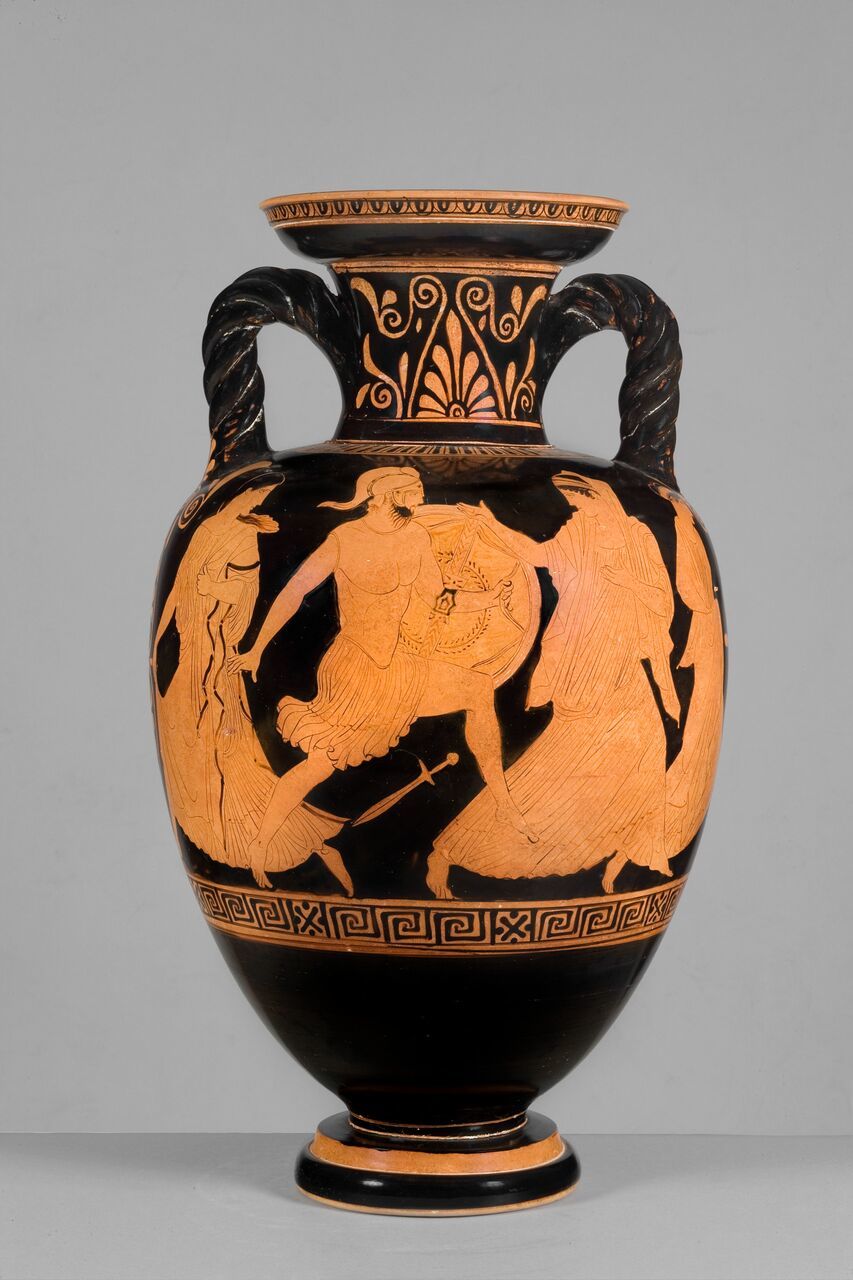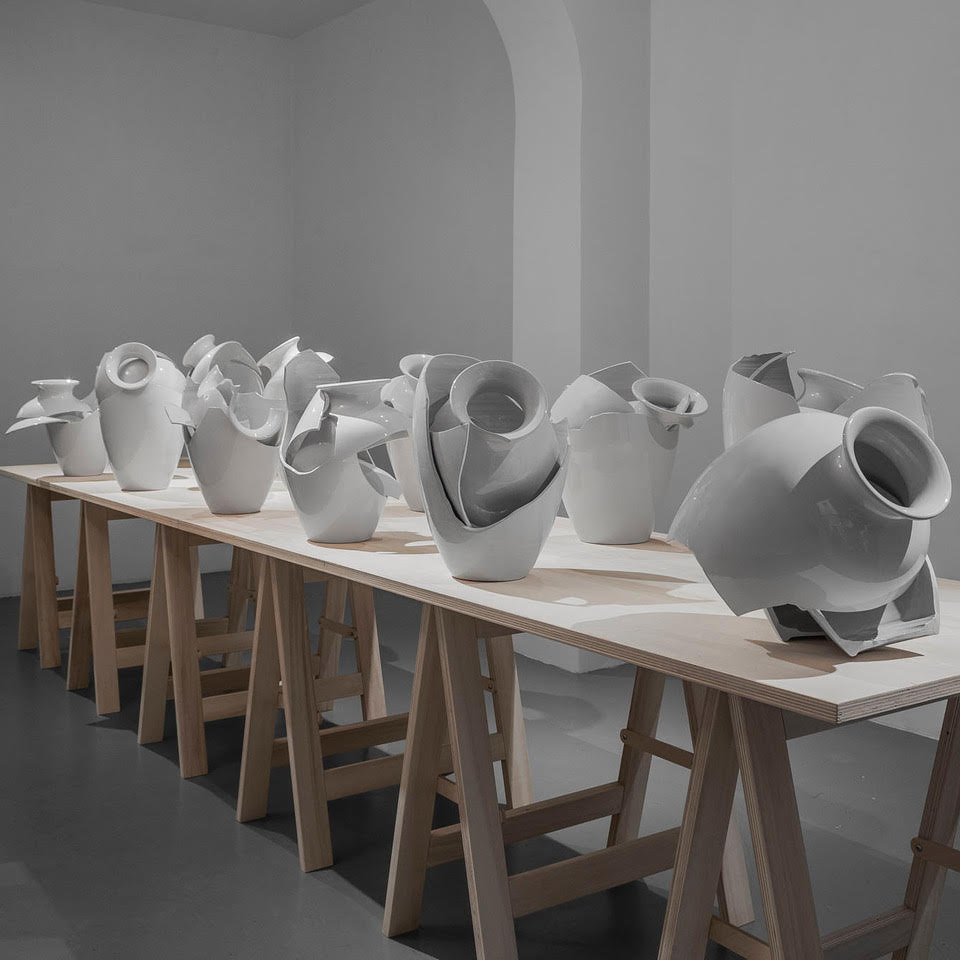Deconstructivism is fully alive today, and can be seen in various areas in the design world: ceramics, furniture, and objects. While the Movement was emerged in the 80s in architecture and contemporary art, and was acknowledged in a seminal exhibition at MoMA (1988, curated by Philip Johnson), the current direction in Deconstructivism is given an innovative interpretation, used in expressing new ideas and narratives. Stylistically, it is manifested in disassembled geometrical forms into non-rectilinear, expressive, distorted shapes.
Deconstructivism is at the core of a new series of vases, entitled ‘Un fiore per 12 mesi’ (‘One Fower for 12 months’), by Italian designer Andrea Anastasio; it is currently exhibited at the Rome-based Giustini / Stagetti Gallery through December 23rd. Based in Naples, Rome, and India, Anastasio’s series is composed of 12 vases, all inspired by the classical Greek-Roman Amphora and by the Korean Moon-Vase, two examples of historical objects, which have been known for their ultimate simplicity, synonymous with perfection. The juxtaposition of simplicity and complexity, the minimal and the delicate, is at the heart of these vases, which are produced by the Faenza-based historical ceramic manufacturer Bottega d’Arte Ceramica Gatti, in which Anastasio has recently been appointed artistic director of the company’s Design department. By deconstructing those forms and by creating magical, delicate shapes, into an installation in white, Anastasio seeks to express rebirth, reawakening, and the fragility of life. Poetry in clay.
Deconstructivism is at the core of a new series of vases, entitled ‘Un fiore per 12 mesi’ (‘One Fower for 12 months’), by Italian designer Andrea Anastasio; it is currently exhibited at the Rome-based Giustini / Stagetti Gallery through December 23rd. Based in Naples, Rome, and India, Anastasio’s series is composed of 12 vases, all inspired by the classical Greek-Roman Amphora and by the Korean Moon-Vase, two examples of historical objects, which have been known for their ultimate simplicity, synonymous with perfection. The juxtaposition of simplicity and complexity, the minimal and the delicate, is at the heart of these vases, which are produced by the Faenza-based historical ceramic manufacturer Bottega d’Arte Ceramica Gatti, in which Anastasio has recently been appointed artistic director of the company’s Design department. By deconstructing those forms and by creating magical, delicate shapes, into an installation in white, Anastasio seeks to express rebirth, reawakening, and the fragility of life. Poetry in clay.

